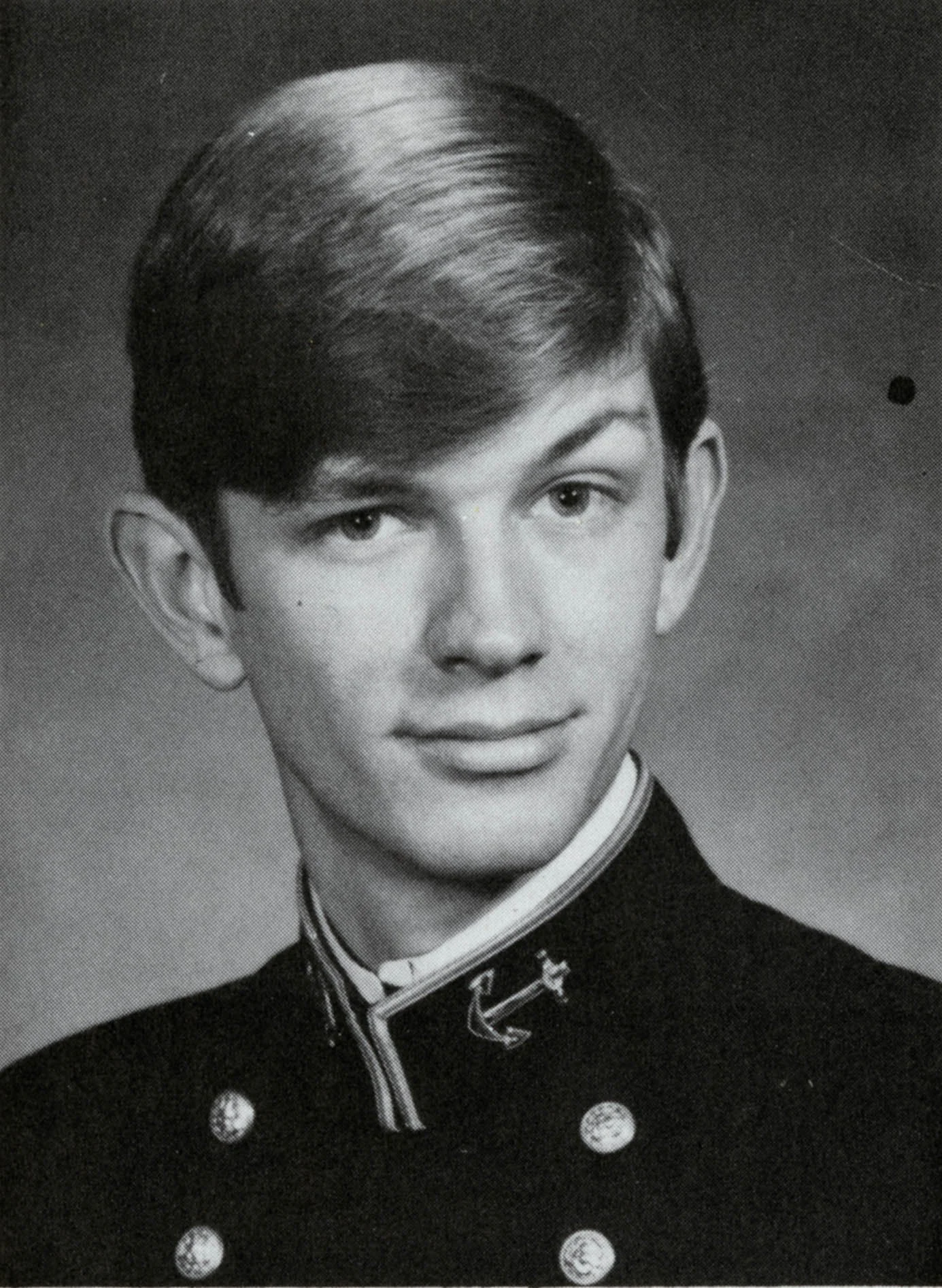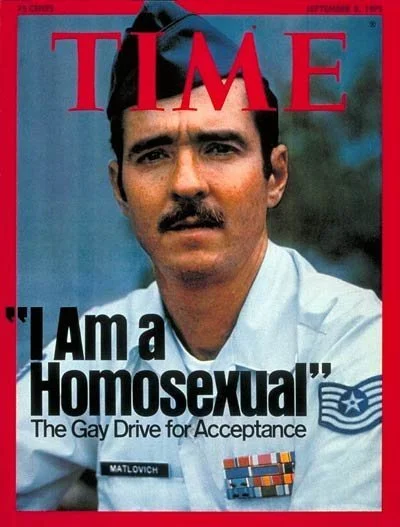The Legacy of Copy Berg:
A Tale of Courage and Creative Spirit
In the heart of Port Jefferson, New York, on a warm July day in 1951, a child was born into the Berg family with a destiny waiting to unfold. Vernon Edward Berg III entered the world amidst whispers of a family tradition that would shape his identity in unexpected ways. His grandmother, a dedicated librarian in New York, had a playful habit of assigning nicknames based on her work tracking different editions of books. Thus, the newborn Vernon was affectionately dubbed "Copy 3" in jest, a nickname that would stick and become an endearing part of his journey as an artist and activist. This connection, coupled with his family's deep-rooted values of integrity and compassion, shaped Copy's journey from a Naval officer to a trailblazing advocate for LGBTQ+ rights and a celebrated artist.
Copy's childhood was marked by a deep bond with his father, Captain Vernon E. Berg Jr., a highly respected officer in the Navy's chaplain corps. Their similarities were uncanny, from their sandy blond hair to their deep blue eyes and second-tenor voices. But it was their shared values of integrity, compassion, and courage that truly set them apart.
After graduating from the Naval Academy at Annapolis, Copy faced a pivotal moment in 1976 when he bravely declared his homosexuality, becoming the first officer in Navy history to do so openly. His journey was not just a personal struggle but a courageous battle for equality and acceptance, challenging discriminatory policies within the military.
Tech Sgt. Leonard Matlovich on the September 8, 1975, cover of TIME.
Copy's story didn't end with his military service. He pursued a master's degree in design from Pratt Institute in 1979, immersing himself in the vibrant arts scene of New York City. His talent as an artist blossomed, and he soon gained recognition for his thought-provoking sculptures, paintings, photographs, and whimsical drawings that captured the essence of life with AIDS in the United States. In the late 1990s, Copy faced controversy yet again when his artwork, including intimate photographs by Robert Mapelthorpe, stirred debate at Rutgers University. Despite criticism, Copy remained unapologetic, using his art to challenge stigma and raise awareness about AIDS.
The pivotal moment came during a hearing at Norfolk Naval Station, where Copy's father stood by his side, advocating for fairness and understanding. Commander Vernon Berg Jr.'s powerful testimony, rooted in his experiences as a chaplain in Vietnam, challenged stereotypes and highlighted the humanity of LGBTQ+ individuals serving in the military.
Despite the outcome of the hearing, which resulted in Copy receiving an "other than honorable" discharge, his courage and resilience sparked a larger conversation about LGBTQ+ rights in the armed forces. His legal battle, alongside other activists like Tech. Sgt. Leonard P. Matlovich, led to policy changes and the granting of honorable discharges to homosexuals, leaving a lasting impact on military culture.
As Copy's health declined due to AIDS-related complications, his passion for art and activism never wavered. He continued to create, leaving behind a rich legacy of courage, creativity, and compassion. Copy Berg's impact on LGBTQ+ rights, artistic expression, and the fight against HIV/AIDS remains an enduring testament to his remarkable life and legacy.
The comprehensive and extraordinary donation to the New York Public Library's Manuscripts and Archives Division is a gift of immense cultural and historical significance. It not only sheds light on Berg's artistic process and evolution but also provides invaluable historical context to his activism, particularly his pivotal legal battle against military discrimination based on sexual orientation. By preserving Berg's papers and artworks in such meticulous detail, the library ensures that his legacy remains accessible to future generations, inspiring ongoing dialogue and scholarship in LGBTQ+ history and artistic expression.
His personal life, marked by love, loss, and resilience, added depth to his narrative. Following the loss of his partner, Paul Nash, in 1993, Copy found solace and companionship with Dub Williams, his last partner. Their relationship was a testament to enduring love in the face of adversity, providing comfort and support during Copy's battle with AIDS.
Despite the challenges posed by his illness, Copy remained dedicated to his art and advocacy work. His sculptures, paintings, and photographs became windows into his soul, capturing the raw emotions of living with a life-threatening disease while challenging societal norms and perceptions. Copy and his partner Paul traveled extensively both by cab in N.Y.C. and worldwide. Being constantly on the move, he rarely found himself near a studio suitable for creating larger museum-quality oils. However, true to his creative obsessions, Copy never went anywhere without a sketchbook, pens, and pencils, to chronicle nearly every aspect of his travels and subsequently life.
Copy Berg's impact reverberated not only in artistic circles but also in the realm of LGBTQ+ rights and healthcare advocacy. His courage in speaking out, even when faced with controversy or misunderstanding, inspired others to embrace their truths and fight for justice and equality. As Copy's health declined, he continued to create, pouring his remaining energy into his art and leaving behind a vast collection of works that captured a lifetime of passion, pain, and perseverance. His studio became a sanctuary, a place where creativity flourished despite the challenges of illness and mortality.
On a January day in 1999, Copy Berg passed away at Lenox Hill Hospital in Manhattan, surrounded by loved ones and a legacy that would endure far beyond his lifetime.
Copy Berg's life story continues to be celebrated and shared, his impact on the world of art and activism becomes increasingly evident. In the years following his passing, tributes and retrospectives have highlighted not only his artistic talent but also his unwavering dedication to social change and human rights.
The New York art scene, where Copy once shone brightly, continues to remember him fondly. Retrospective exhibitions curated by leading galleries have showcased his diverse body of work, from the early days of his artistic exploration to the poignant pieces created during his battle with AIDS. These exhibitions not only honor his artistic legacy but also serve as platforms for discussions on LGBTQ+ rights, healthcare access, and the enduring power of art as a form of expression and activism.
Beyond the art world, Copy's influence reaches into the realm of social change and policy reform. His pioneering efforts in challenging the military's discriminatory policies against LGBTQ+ individuals paved the way for greater inclusion and acceptance within the armed forces. The legal battles he fought and the conversations he sparked contributed to a shift in public perception and paved a path toward more equitable treatment for LGBTQ+ service members.



